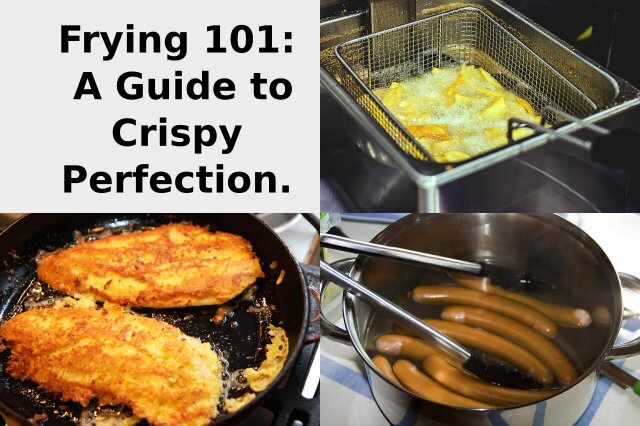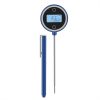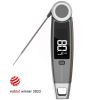Frying 101:
A Beginner’s Guide to Crispy Perfection.
Welcome to ‘Frying 101: A Beginner’s Guide to Crispy Perfection’, where we dive deep into the art of frying and reveal the secrets to achieving ultimate crispy goodness.
Whether you’re a novice who has never wielded a frying pan or a seasoned home cook looking to up your frying game, this guide has got you covered.
In this article, we’ll walk you through the essential techniques, tips, and tricks to ensure your fried creations come out crispy on the outside and perfectly cooked on the inside.
From choosing the right oil and temperature to mastering the art of crumbing (breading) and avoiding common mistakes, we’ve gathered expert advice to help you become a frying pro in no time.
Join us as we explore the science behind the perfect crunch and discover how to make golden, delicious fried favourites like French fries, chicken tenders, and onion rings.
Get ready to unleash your inner chef and impress friends and family with mouthwatering fried delights.
So grab your apron and let’s get frying! It’s time to unlock the secrets to crispy perfection.
What is frying?
Frying is a cooking method that involves immersing food in hot oil.
This causes the outside of the food to become crispy and browned, while the inside remains cooked through.
Frying can be used to cook a variety of foods, including meat, fish, vegetables, and desserts.
Types of frying techniques.
When it comes to frying, there are several techniques to choose from, each yielding different results.
The most common techniques include deep frying, shallow frying, pan frying, stir frying and air frying.
Deep frying.
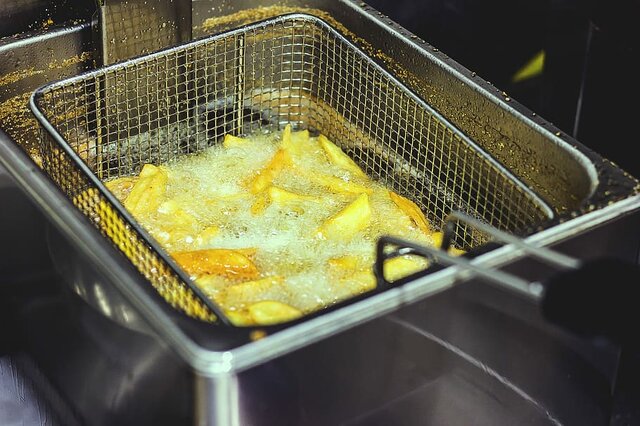
This technique is often used to cook foods that need to be crispy on the outside and tender on the inside, such as french fries, chicken nuggets, and doughnuts.
Deep frying uses a large amount of oil and requires high heat, which results in a crispy exterior and a cooked through interior.
Deep frying Pros:
- Results in a very crispy exterior and a cooked through interior.
- Can be used to cook a variety of foods, including french fries, chicken nuggets, doughnuts, and fish and chips.
- Can be a quick and easy way to cook food.
Deep frying Cons:
- Uses a lot of oil, which can be unhealthy.
- Requires high heat, which can be dangerous.
- Can be difficult to control the temperature of the oil, which can lead to uneven cooking or burning.
- Can be messy.
Shallow frying.
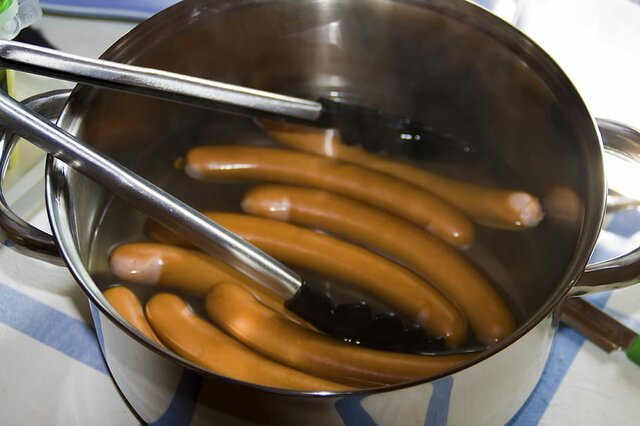
This technique is often used to cook foods that are too thick or dense to be deep-fried, such as chicken cutlets, fish fillets, and vegetables.
Shallow frying uses medium-high heat and results in a browned exterior and a cooked through interior.
Shallow frying Pros:
- Uses less oil than deep frying.
- Requires lower heat than deep frying.
- Can be used to cook a variety of foods, including chicken cutlets, fish fillets, and vegetables.
Shallow frying Cons:
- Does not result in as crispy of an exterior as deep frying.
- Can be difficult to brown the food evenly.
- Can be messy.
Pan frying.
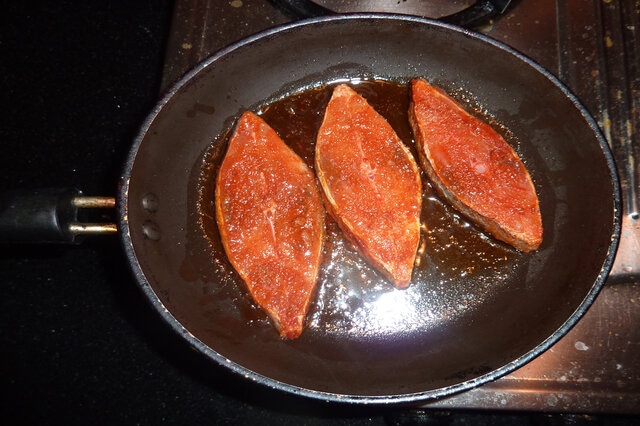
This method uses a small amount of oil and medium-high heat.
Pan frying results in a browned exterior and a cooked through interior.
Pan frying Pros:
- Versatile cooking method.
- Can be used to cook a variety of foods, including meat, fish, vegetables, and eggs.
- Results in a browned exterior and a cooked through interior.
Pan frying Cons:
- Uses a small amount of oil, but more than stir-frying.
- Can be difficult to control the heat.
- Can be messy.
Stir-frying.
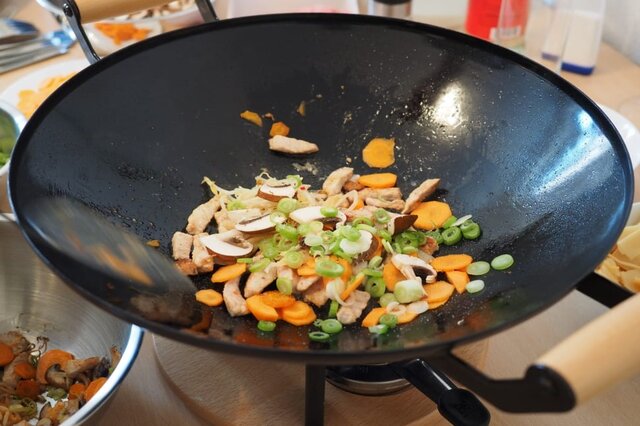
The technique is often used to cook Asian dishes, such as stir-fried vegetables, chicken stir-fry, and shrimp stir-fry.
Stir-frying uses very high heat and results in a browned exterior and a cooked through interior.
Stir-frying Pros:
- Fast and efficient cooking method.
- Uses a small amount of oil.
- Can be used to cook a variety of foods, including vegetables, meat, and seafood.
- Can be a healthy way to cook food.
Stir-frying Cons:
- Requires a wok.
- Can be difficult to control the heat.
- Can be messy.
Air frying.
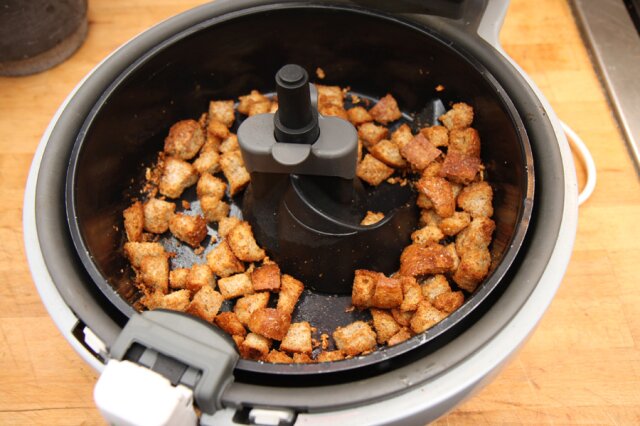
Air frying is often considered to be a healthier alternative to deep frying, as it uses less oil.
Air frying uses medium-high heat and results in a crispy exterior and a cooked through interior.
Air frying Pros:
- Uses less oil than deep frying.
- Can be a healthier way to cook food.
- Fast and efficient cooking method.
Air frying Cons:
- Not as crispy as deep frying.
- Requires an air fryer.
- Can be difficult to cook certain foods evenly.
Which frying technique is best for you?
The best frying technique for you will depend on the type of food you are cooking and the desired result.
For example, if you want to make crispy french fries, you would use the deep frying technique.
If you want to make a quick and healthy stir-fry, you would use the stir-fry technique.
Here is a summary of the different frying techniques and their advantages and disadvantages:
- Deep frying.
- Vegetable Oil:
- Vegetable oil is a versatile choice for frying. It has a high smoking point, meaning it can withstand high temperatures without burning.
It also has a neutral flavour, allowing the flavours of the food to shine through.
- Canola Oil:
- Canola oil is another excellent option for frying. It is low in saturated fat and has a high smoking point, making it a healthier choice.
Canola oil is also neutral in flavour, making it suitable for a wide range of dishes.
- Peanut Oil:
- Peanut oil is commonly used in Asian cuisine for its distinct flavour and high smoking point.
It adds a nutty taste to fried foods and can withstand high temperatures without breaking down.
- Sunflower Oil:
- Sunflower oil is a popular choice for frying due to its light flavour and high smoking point.
It provides a crispy texture to fried foods and is suitable for various dishes.
- Deep Fryer:
- A deep fryer is a convenient appliance that allows for precise temperature control and eliminates the need for monitoring oil temperature manually.
It usually comes with a basket for easy food placement and removal.
- Thermometer:
- A kitchen thermometer is an invaluable tool for frying.
It helps you monitor the oil temperature accurately, ensuring that your food cooks to perfection.
Why You Should Use a ChefsTemp Thermometer When Cooking
A ChefsTemp thermometer is an essential tool for any cook or baker.
It allows you to monitor the internal temperature of your food more accurately, which helps you achieve consistent results and perfect textures.Additionally, it can be used to make sure that food has reached safe temperatures, ensuring that it's safe to eat.
Unlike other thermometers, the ChefsTemp reads quickly and accurately in both Celsius and Fahrenheit.- ChefsTemp Pocket Pro

- Description:Professional thermocouple probe sensor with 1 second reading time, this pocket size kitchen gadget is suitable for both professional chefs and home cooks. Pocket Pro is another amazing innovation from ChefsTemp. It is a 4-way rotating display thermometer,
- Price: $34.99
- ChefsTemp Finaltouch X10

- Description:Finaltouch X10 is the Winner of Red Dot Product Design in 2022. The Red Dot Design Award is one of the three most prestigious professional design competitions in the world. Winning the award proves its the Leader in Design and Technology. Chefs around the
- Price: $69.99
- ChefsTemp Quad Xpro

- Description:Quad XPro is designed to track temperatures over an extended period of time with moderate-heat cooking methods, such as smoking, oven-roasting, deep-frying, home brewing, and Sous Vide and to be used while grilling.
- Price: $109.99
- Frying Pan or Skillet:
- A sturdy frying pan or skillet is essential for shallow frying and pan frying.
Look for one with a thick bottom to distribute heat evenly.
- Tongs or Slotted Spoon:
- Tongs or a slotted spoon are handy for flipping and removing food from hot oil.
They allow you to handle the food without getting too close to the hot oil.
- Crumbing (Breading) Station:
- If you plan on crumbing (breading) your fried foods, a crumbing (breading) station is a must.
It typically consists of three shallow dishes: one for flour, one for beaten eggs, and one for breadcrumbs or coating.
- Clean and Dry:
Start by cleaning and patting dry the food you’ll be frying.Moisture on the surface can cause oil to splatter, so it’s important to remove excess moisture.
- Season:
Season the food with spices, salt, or marinades, if desired.This step adds flavour and enhances the overall taste of the dish.
- Dredge or Crumb (Bread):
If you want a crispy coating on your fried food, consider dredging or crumbing (breading) it.Dredging involves coating the food in flour or cornstarch before frying, while crumbing (breading) involves dipping the food in beaten eggs and then coating it with breadcrumbs or a similar coating.
- Chill:
After crumbing (breading), it’s a good idea to chill the food in the refrigerator for about 15-30 minutes.Chilling helps the coating adhere better and prevents it from falling off during frying.
- Maintain the right oil temperature:
- It’s vital to maintain the right oil temperature throughout the frying process. If the oil is too hot, the food will burn before it’s cooked through.
If the oil is too cold, the food will absorb excess oil and become greasy.
Use a kitchen thermometer to monitor the oil temperature and adjust the heat accordingly.
- Fry in small batches:
- Overcrowding the pan or fryer can lower the oil temperature, resulting in soggy food.
Fry in small batches to ensure that the food cooks evenly and maintains its crispiness.
- Drain excess oil:
- After frying, place the cooked food on a wire rack or paper towels to drain excess oil.
This step helps maintain the crispiness of the food and prevents it from becoming greasy.
- Season immediately:
- Season the fried food with salt or spices immediately after removing it from the oil.
The hot oil helps the seasoning adhere better, enhancing the flavour.
- Serve hot:
- Fried foods are at their best when served hot and fresh.
Allow the food to cool slightly for safety, but aim to serve it as soon as possible to retain its crispy texture.
- Using the wrong oil:
- Using an oil with a low smoking point can lead to burnt or overly greasy food.
Always choose an oil with a high smoking point that can withstand the frying temperature.
- Not maintaining the oil temperature:
- Fluctuating oil temperature can result in unevenly cooked food.
Monitor the oil temperature closely and adjust the heat as needed to maintain a consistent temperature.
- Adding too much food at once:
- Overcrowding the pan or fryer can cause the oil temperature to drop rapidly, resulting in soggy food.
Fry in small batches to ensure that the food cooks evenly.
- Frying food that’s too wet:
- Excess moisture on the food’s surface can cause oil to splatter and make the coating soggy.
Pat the food dry before frying to prevent this.
- Ignoring safety precautions:
- Frying involves working with hot oil, so it’s essential to take safety precautions.
Avoid wearing loose clothing, use long tongs or a slotted spoon to handle the food, and keep a fire extinguisher nearby, just in case.
- Moderation:
- Enjoy fried foods in moderation as part of a balanced diet.
Pair them with healthier options like salads or steamed vegetables to create a well-rounded meal.
- Oil quality:
- Opt for high-quality oils with healthier fat profiles, such as those high in monounsaturated fats or low in saturated fats.
Avoid reusing oil too many times, as it can break down and become more harmful.
- Temperature control:
- Maintaining the correct oil temperature is crucial for minimizing oil absorption.
If the oil is too hot, the food will cook too quickly and absorb more oil.
If the oil is too cold, the food will absorb excess oil.
Aim for a temperature between 175-190°C (350-375°F). - Drain excess oil:
- Allowing fried foods to drain on a wire rack or paper towels after cooking helps remove excess oil and reduces its overall fat content.
- Experiment with healthier alternatives:
- Consider experimenting with alternative cooking methods like baking or air frying, which can produce similar results to traditional frying but with less oil.
- English Breakfast:
- An English breakfast is a combination of pan fried rich flavours and comforting ingredients.
From sizzling bacon to perfectly fried eggs, buttery toast to juicy sausages, it’s a must try.
- Frybread:
- As the name suggests, frybread is a fried recipe idea.
The beauty of this shallow fried dish lies in its simplicity, as it only requires a few basic ingredients that you probably already have in your kitchen.
The combination of the crispy exterior and soft interior makes it a perfect vessel for spreading your favourite toppings or mopping up gravies.
- Crispy French Fries:
- Cut potatoes into thin sticks, soak them in cold water for 30 minutes to remove excess starch, pat them dry, and fry them in hot oil until golden and crispy.
Season with salt and serve with ketchup or your favourite dipping sauce.
- French toast:
- Delicious French toast is another pan fried breakfast idea.
It is light and fluffy, yet golden and crispy at the same time.
- Crispy French Fries:
- Cut potatoes into thin sticks, soak them in cold water for 30 minutes to remove excess starch, pat them dry, and fry them in hot oil until golden and crispy.
Season with salt and serve with ketchup or your favourite dipping sauce.
- Perfectly Crispy Chicken Tenders:
- Dip chicken tenders in beaten eggs, coat them in a mixture of breadcrumbs, flour, and spices, and fry them until golden brown and cooked through.
Serve with a honey bbq sauce or a spicy barbecue sauce.
- Tempura Shrimp:
- Dip shrimp in a light tempura batter made from flour, cornstarch, and ice-cold water, and fry them until golden and crispy.
Serve with a soy-based dipping sauce.
- Onion Rings:
- Slice onions into rings, dip them in a mixture of buttermilk and flour, and fry them until golden and crunchy.
Season with salt and serve with a tangy dipping sauce.
Overall, deep frying is the most unhealthy frying method, as it uses a lot of oil and requires high heat.
Shallow frying, stir-frying, pan frying, and air frying are all healthier options, as they use less oil and require lower heat.
The best frying method for you will depend on your individual needs and preferences.
If you are looking for the crispiest exterior and don’t mind using a lot of oil, then deep frying is the best option.
If you are looking for a healthier option, then shallow frying, stir-frying, pan frying, or air frying are all good choices.
No matter which technique you choose, the key to successful frying lies in selecting the right oil and maintaining the correct temperature.
Choosing the right oil for frying.
The type of oil you use for frying plays a crucial role in the texture and flavour of your fried foods.
Here are some popular options:
Remember to choose an oil with a high smoking point to prevent it from burning during frying.
Additionally, always use fresh oil to ensure the best results.
Essential tools and equipment for frying.
To become a frying pro, you’ll need a few essential tools and equipment.
Here’s a list of must-haves:
Having the right tools and equipment will make your frying experience much more enjoyable and help you achieve better results.
Preparing food for frying.
Properly preparing your food before frying is crucial to ensure even cooking and a crispy exterior.
Here’s a step-by-step guide to preparing food for frying:
By following these steps, you’ll ensure that your food is ready for frying and will result in a delicious, crispy exterior.
Frying tips for crispy perfection.
Achieving crispy perfection requires attention to detail and following a few essential tips and tricks.
Here are some expert frying tips to help you reach crispy nirvana:
By keeping these tips in mind, you’ll be well on your way to achieving crispy perfection with every fry.
Common mistakes to avoid when frying.
Even the most experienced cooks can make mistakes when frying.
Here are some common pitfalls to avoid:
By being aware of these common mistakes, you can avoid them and elevate your frying game.
Health considerations when frying.
Fried foods are undeniably delicious, but it’s essential to be mindful of their impact on health.
Here are a few health considerations to keep in mind:
By being mindful of these health considerations, you can still enjoy the occasional fried treat while maintaining a balanced lifestyle.
Delicious fried recipes to try.
Now that you’ve mastered the art of frying, it’s time to put your skills to the test with some delicious recipes.
Here are a few crowd-pleasing favourites to get you started:
These recipes are just the beginning.
Feel free to experiment with different ingredients, coatings, and seasonings to create your own signature fried dishes.
Frequently Asked Questions About Frying.
What are the drawbacks of frying?
Frying can be unhealthy if the oil is not used properly.
Fried foods can be high in calories and fat.
Frying can also be dangerous if not done properly, as the oil can be hot enough to cause burns.
How can I prevent my oil from smoking?
To prevent your oil from smoking, make sure that you are using the correct type of oil for the temperature you are cooking at.
You should also avoid overfilling the frying pan with oil.
How can I tell if my oil is ready to use?
The best way to check if oil is ready for frying is to use a wooden spoon.
Put the end of the spoon in the oil and look for bubbles.
If there are many bubbles and they float up, the oil is ready.
If the bubbles are too strong, the oil is too hot.
Wait for it to cool down and check again.
How long should I fry food for?
The amount of time you need to fry food for will vary depending on the type of food you are cooking and the desired doneness.
For example, french fries should be fried for about 3-4 minutes per side, or until they are golden brown and crispy.
How can I tell if my food is done?
The food is done when it is cooked through and has a golden brown crust.
If you are deep frying, the food is usually done when it floats to the top.
You can use a meat thermometer to check the internal temperature of the food to make sure that it is cooked through.
Conclusion:
Mastering the art of frying.
Congratulations! You’ve completed ‘Frying 101: A Beginner’s Guide to Crispy Perfection’.
Armed with the knowledge of essential frying techniques, oil selection, and expert tips, you’re well on your way to becoming a frying pro.
Remember, practice makes perfect. Don’t be afraid to experiment and try new recipes.
With time and experience, you’ll develop a keen sense of timing and achieve crispy perfection with every fry.
So, put on that apron, heat up the oil, and let your inner chef shine. Enjoy the crispy delights you create and share them with loved ones.
Happy frying!
